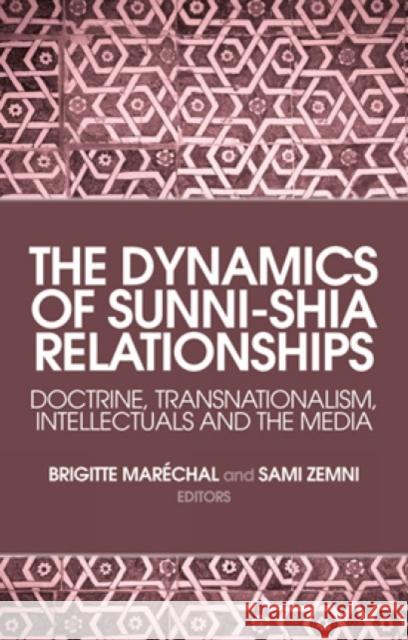The Dynamics of Sunni-Shia Relationships: Doctrine, Transnationalism, Intellectuals and the Media » książka
The Dynamics of Sunni-Shia Relationships: Doctrine, Transnationalism, Intellectuals and the Media
ISBN-13: 9781849042178 / Angielski / Twarda / 2014 / 320 str.
The Dynamics of Sunni-Shia Relationships: Doctrine, Transnationalism, Intellectuals and the Media
ISBN-13: 9781849042178 / Angielski / Twarda / 2014 / 320 str.
(netto: 195,55 VAT: 5%)
Najniższa cena z 30 dni: 203,23
ok. 30 dni roboczych
Bez gwarancji dostawy przed świętami
Darmowa dostawa!
Before the immense changes of the 2011 "Arab Spring," it was Sunni-Shia sectarian rivalry that preoccupied most political analyzes of the Middle East. The growing tensions and occasional clashes between believers in the two main strands of Islam have been major concerns. Upheavals within the Shia sphere of influence had altered the relationship: the Iranian revolution of 1979 changed the politics of Iranian Shiism, and impacted on Shia communities regionally, while the 2003 Anglo-American invasion of Iraq initiated a new phase of tension in Sunni-Shia relations. The specter of a sectarian war in Iraq, a diplomatic and military offensive against the Lebanese Hezbollah and a potentially nuclear-armed Iran (along with Tehran's support for Hamas) prompted King Abdallah II of Jordan to warn of an emerging 'Shia crescent'. However, away from such grand geopolitical gestures, Sunni-Shia relations are being rearticulated through an array of local, regional and global connections.
This book presents wide-ranging and up-to-date research that sheds light on the political, sociological and ideological processes that are affecting the dynamics within, as well as the relationships between, the Shia and Sunni worlds. Among the themes discussed are the ideological and doctrinal evolutions that are taking place, the contextualization of the main protagonists' political practices, transnational networks, and the role of intellectuals, religious scholars and the media in shaping and informing this dynamic relationship.











